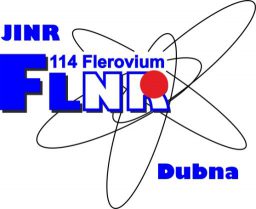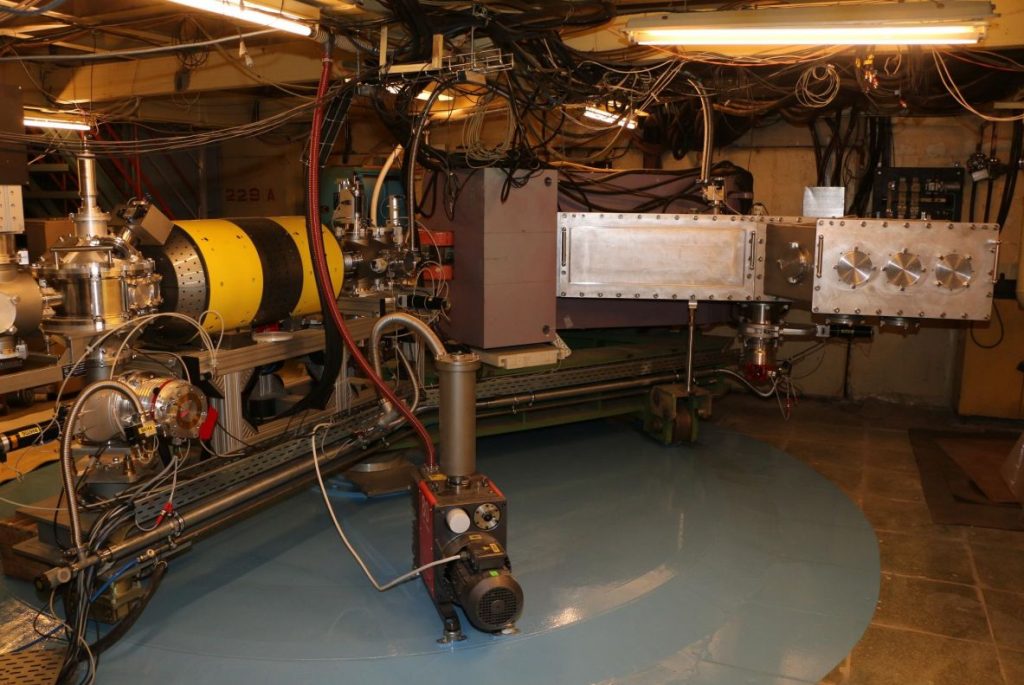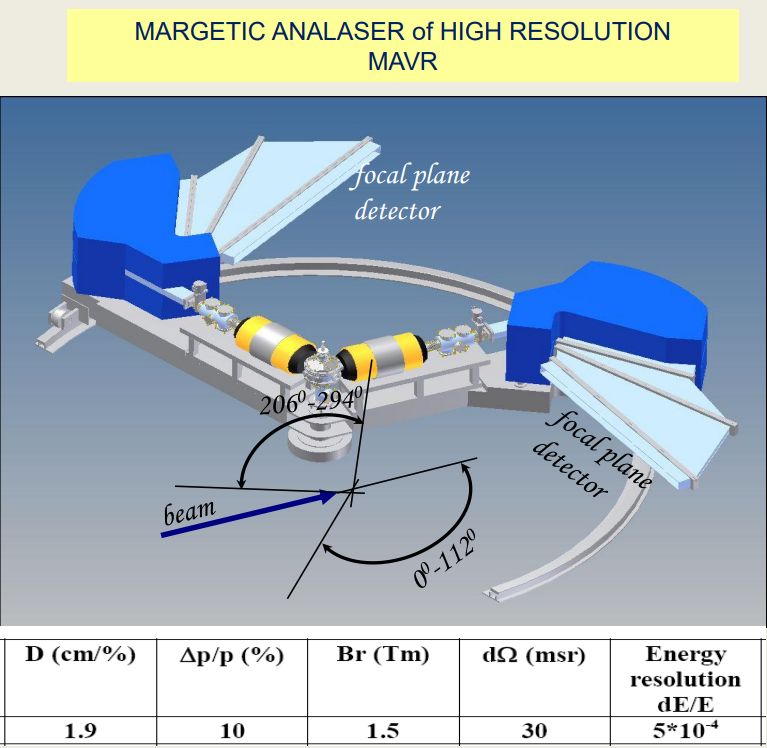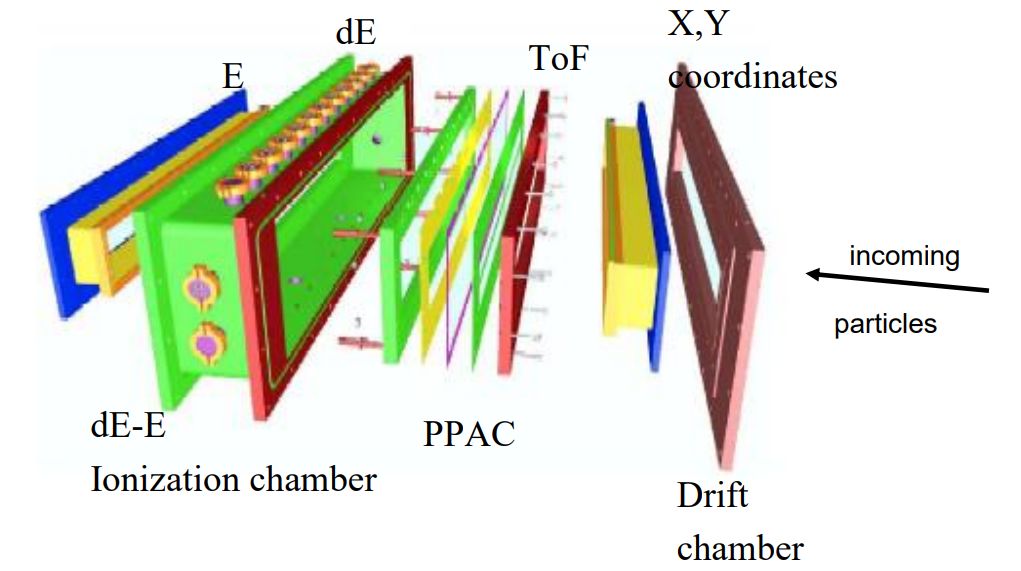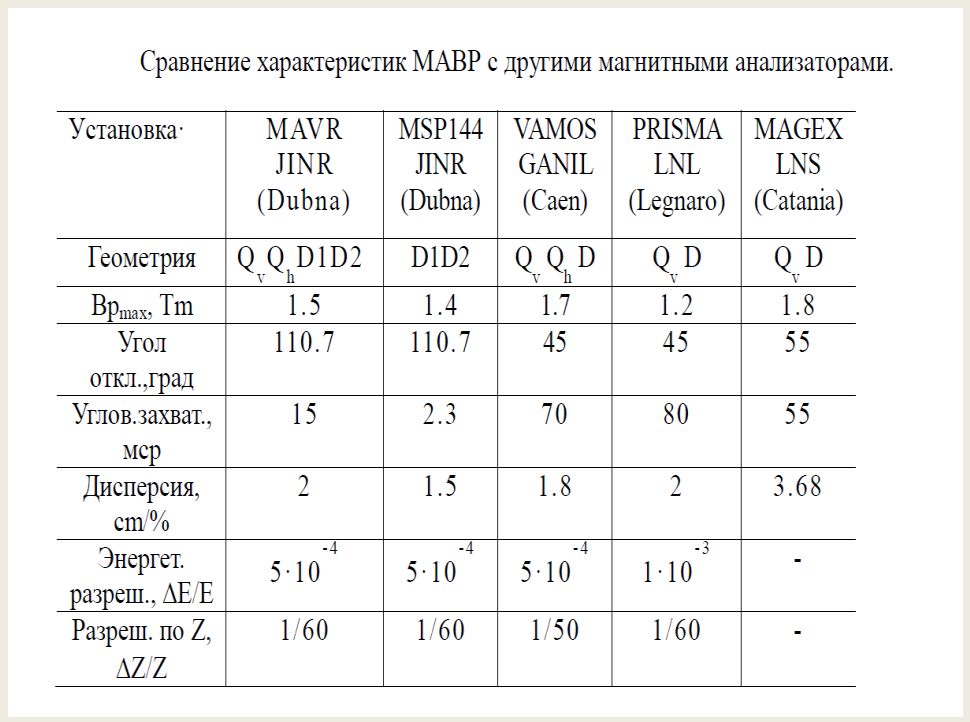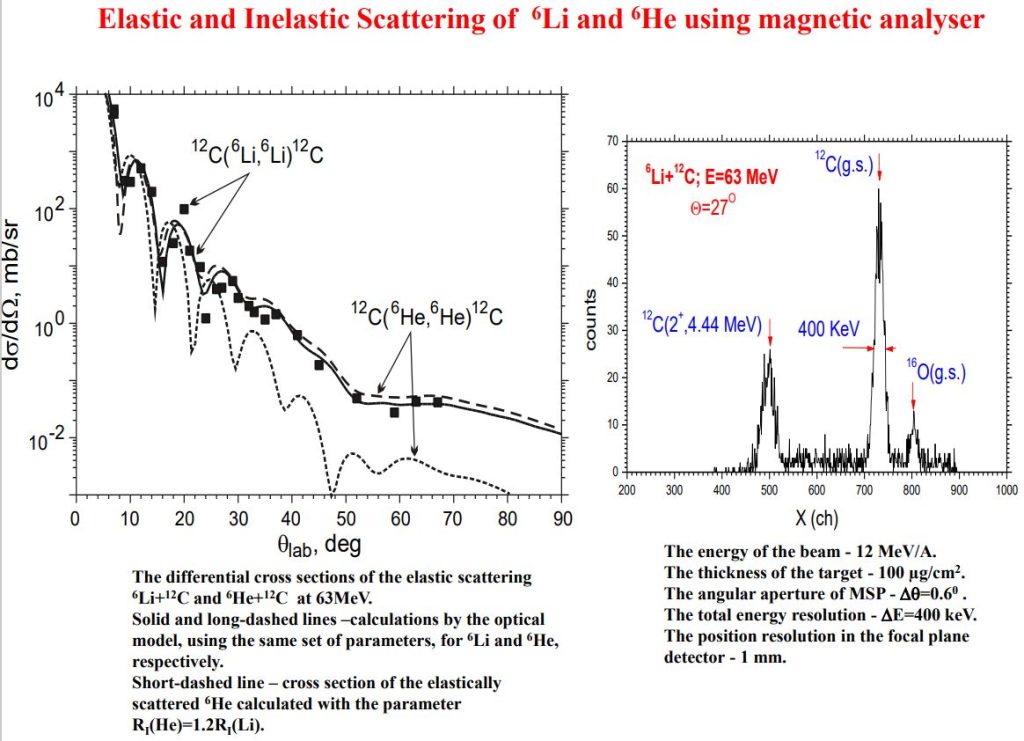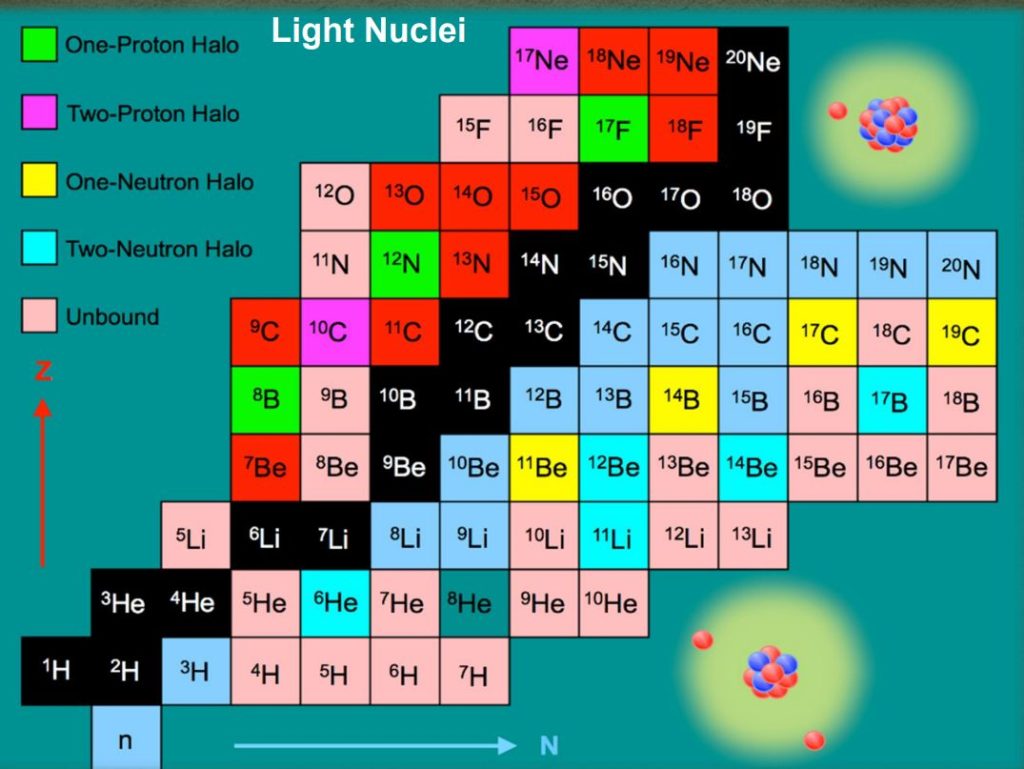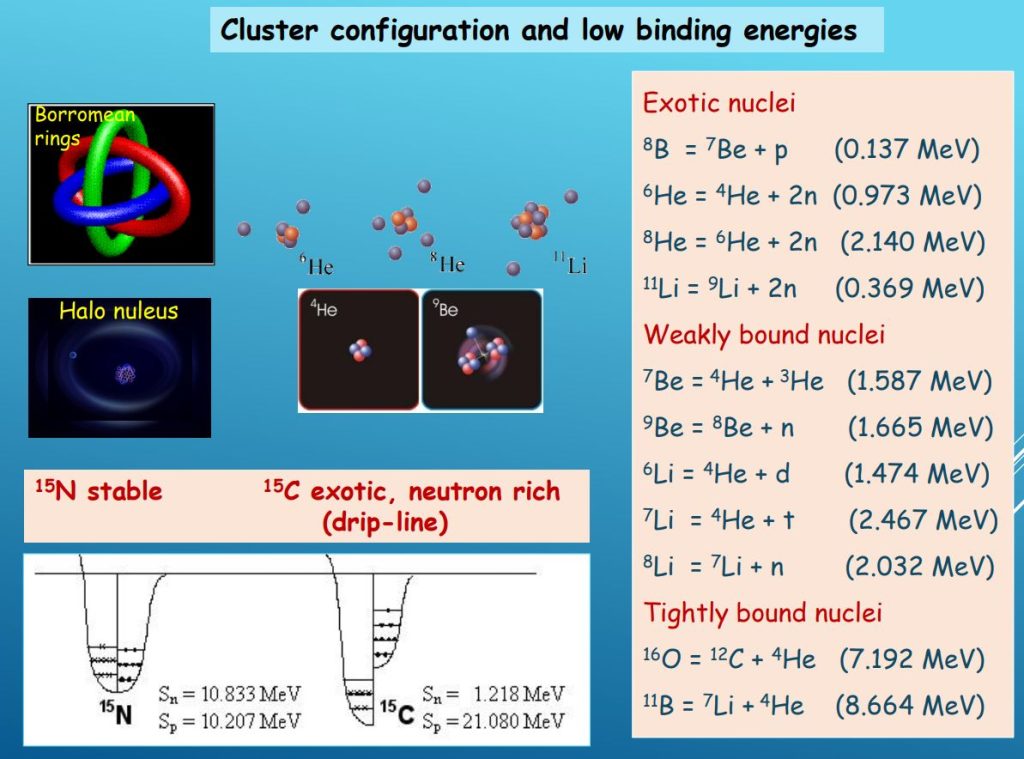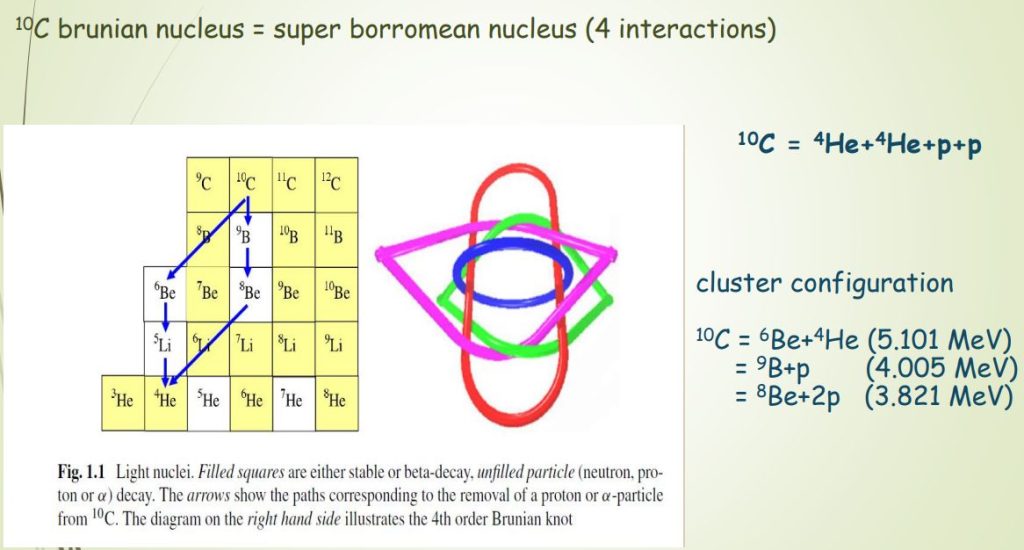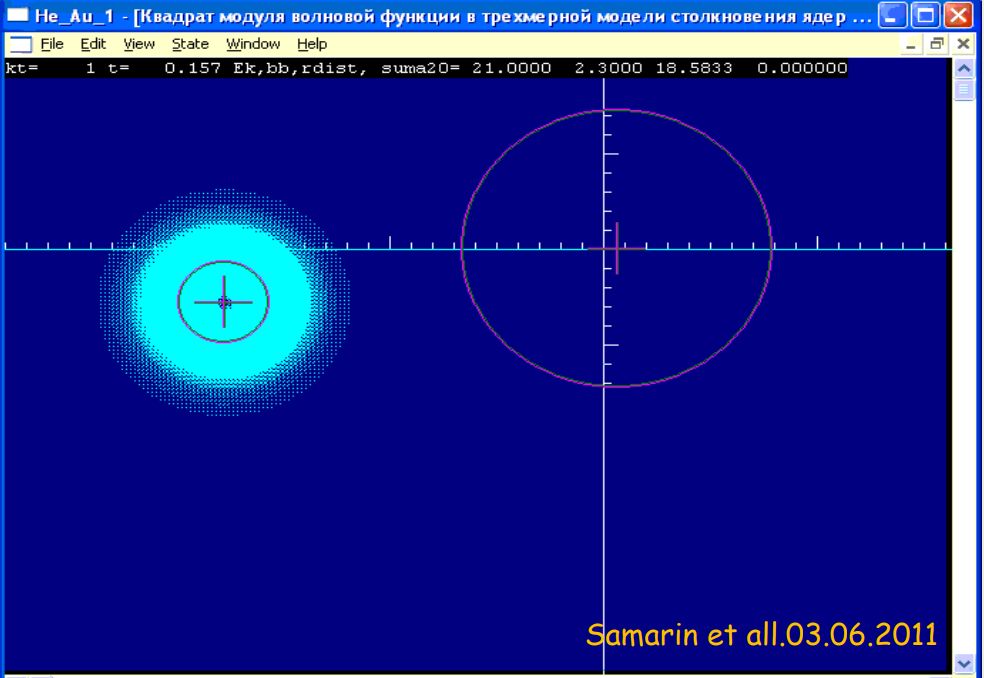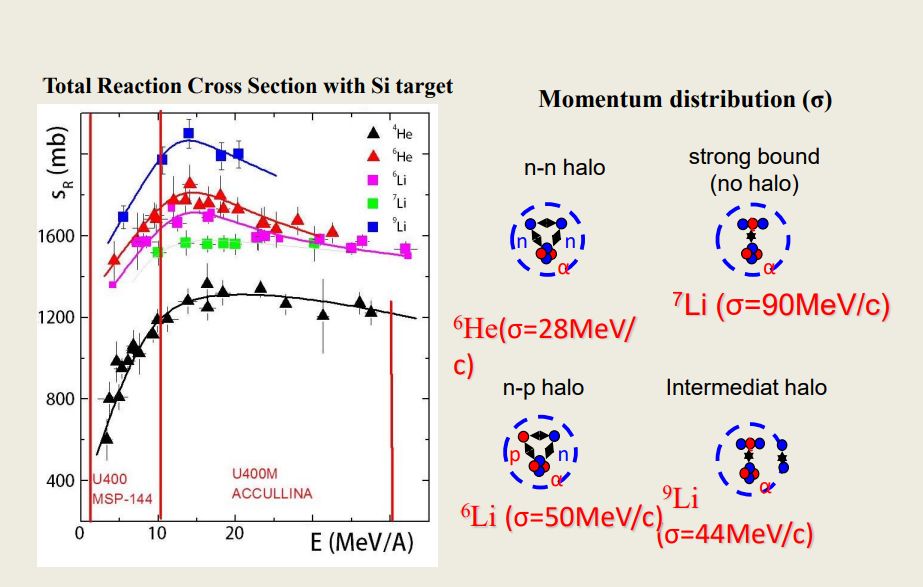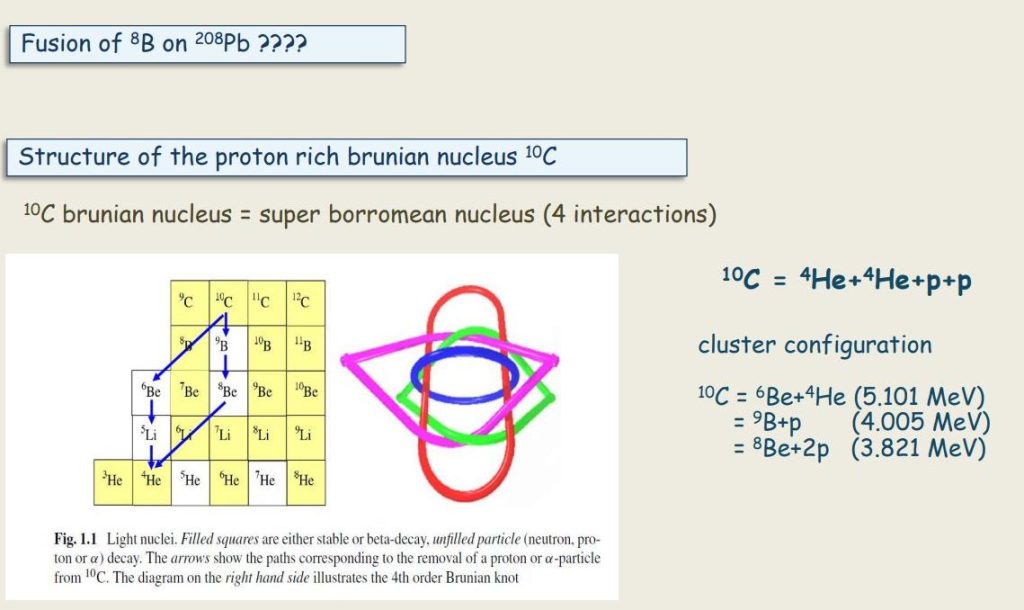MAVR
MAGNETIC ANALYZER “MAVR”
ANALYZER
VYSOKOGO (HIGH)
RESOLUTION
Project of new set- up -high- resolution magnetic analyzer (MAVR)- is presented. This set-up is including new ion optical magnetic and detector systems for separation, detection and identification of nuclear reaction products in wide range of masses (5150) and charges (1-60).
A new magnetic optical system is based on dipole magnet MSP-144 and two quadruple lenz. This modification improves the value of the solid angle of the spectrometer 30 msr (by factor 10). Besides the large acceptance, values of the momentum resolution and dispersion the value 10-4 and 1.9 m, respectively. The detector system MULTI is detector complex, which is aimed to measure Q, Z and A of products with absolute accuracy. These values will be determined by measuring time of flight (TOF), energies losses (ΔE) and total kinetic energies (TKE). Trace of the detected products will be reproduced by a drift-chamber, commonly elaborated with the GANIL.
The MAVR spectrometer will be used both for primary and secondary beams for the accelerator facility U400 and U400R. It will be used for the energy measurement of the detected products as well as an energy beam monochromator.
Proposed MAVR technical characteristics
The investigations described above require high Z and A selectivity of reaction
products, a large solid angle of reaction product detection, a high energy resolution,
and a high purification factor in separation from the primary beam. In addition, it is
necessary to segregate events from the background, which is 1010 to 1012 times higher,
with an energy resolution of up to 10-3, i.e., it is needed to combine the high energy
resolution with a high degree of purification from the primary beam. The momentum
resolving power Δp/p ~ 10-4 obtained by magnetic analysis allows one to have the energy resolution about 100 to 200 keV for the bombarding particles like 12С,
16O,
20Ne ,
48Сa at energies up to 30 MeV/A. In view of this, the experimental setup
should meet the following requirements:
1. The solid angle of the setup should be no smaller than 30 msr to allow carrying out
highly efficient correlation experiments.
2. It should be possible to detect nuclear reaction products, including neutrons, in a
wide range of angles, among them the angle Θlab = 0°.
3. It should be possible to compensate for the kinematical spread of nuclear reaction
products at a large solid angle.
The MAVR magnetic analyzer is supposed to accommodate a specially developed MULTI detecting system capable of detecting and identifying nuclear reaction products by charge Q, atomic number Z, and mass A with a high absolute accuracy.
Nuclear reaction products will be identified by A, Z, and Q through measurement of the energy loss (ΔE), time of flight (Т), and total energy (E) of particles, i.e., the dependences ΔE-E and ΔE-Т (or Е-Т), which requires reproduction of the particle motion trajectory in the analyzer. This will be done using the drift chamber developed together with the VAMOS group (GANIL). The drift chamber to be used for measuring the particle energy loss (ΔE) and total energy (Е) is schematically shown in Fig.. The time of flight will be measured using the parallel-plate-avalanche detector (PPAC)
About Physics by means of the MAVR
High resolution analysis of reaction products
Determination of nucleon stability/instability of exotic nuclei.
Investigation of excited states and resonances in exotic nuclei.
Search for cluster states in light nuclei.
Multi-Nucleon Transfer Reactions as a TOOL to study n-rich nuclei
Momentum distributions of reactions products
from the breakup of weakly bound nuclei
Elastic and Inelastic Scattering for exotic nuclei (0 < theta <)
Reactions in the sub-barrier energy region

Structure of the proton rich brunian nucleus 10C
Evolution of probability density for 197Au+6He(Е=21 MeV)
Computer simulation based on numerical solution of non-stationary Schrödinger equation
Discovery of the cluster configuration inside of 9Be
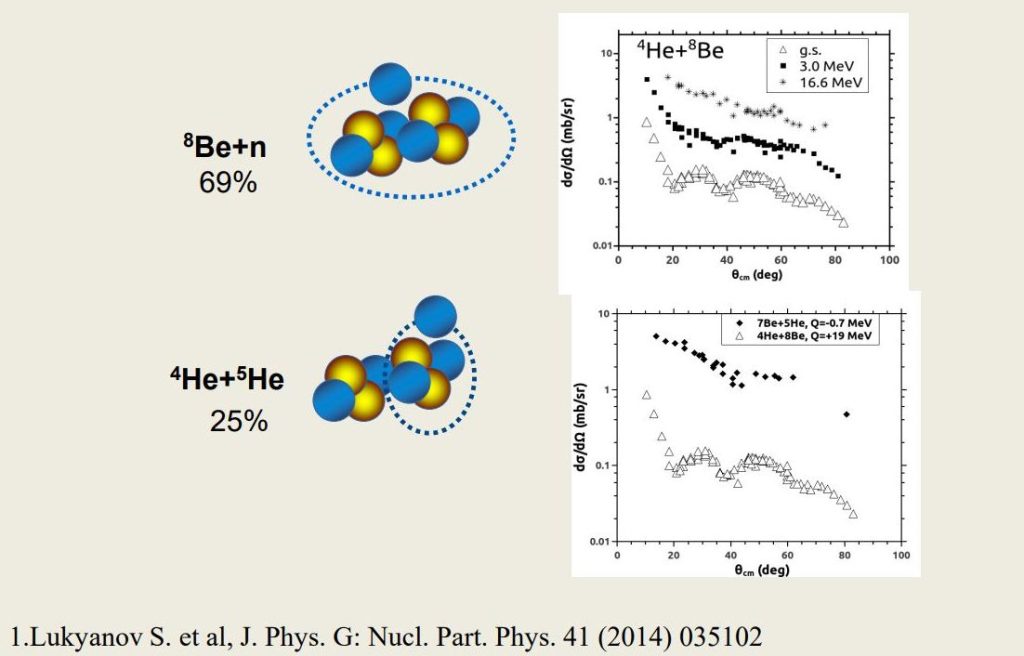
Some peculiarities of total reaction cross section energy dependence at the Mean Fermi Energy region for light 4,6Не and 6,7,8,9Li nuclei are correlated with its
momentum distribution values.
Plans for the future
